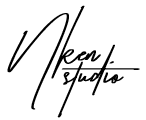Have you ever wondered how photographers manage to create those jaw-dropping images that seem to capture perfection? From flawless skin to vibrant colors, it almost seems like magic. But behind the scenes, there’s a battle going on: the battle of photo retouch vs photo editing. In the competitive world of photography, these two techniques play a crucial role in transforming ordinary pictures into extraordinary works of art. So, what exactly is the difference between photo retouch and photo editing? Let’s start by unraveling the mysteries of photo retouch. Imagine you have a portrait with a few blemishes and unwanted objects in the background. Photo retouching swoops in as the hero, armed with its magical powers to fix those imperfections. It delicately smoothens the skin, removes distracting elements, and enhances the overall appearance of the subject. But it doesn’t stop there. Photo retouching is also capable of adjusting colors, correcting details, and making sure every aspect of the image looks just right. On the other side of the ring, we have photo editing, ready to take on the challenge. While photo retouching focuses more on perfecting the subject, photo editing tackles the broader aspects of an image. It takes care of adjusting colors to create a specific mood or atmosphere. Whether it’s an ethereal sunset or a vibrant cityscape, photo editing brings out the true essence of the photograph. It also plays with the brightness and contrast levels to ensure that the image is visually appealing and captivating. Now that we have a glimpse into the world of photo retouch vs photo editing, it’s time to delve deeper into their individual techniques, benefits, and limitations. So, buckle up and get ready to uncover the secrets behind these fascinating processes. Prepare to be amazed as we unveil the magic that lies within the battle of photo retouch vs photo editing.
What is Photo Retouching?
Photo retouching is a process that involves enhancing and modifying images to improve their overall appearance. It is often used in the field of photography to touch up imperfections and create a more polished final product. Unlike photo editing, which refers to any alterations made to an image, photo retouching specifically focuses on refining the details and making subtle changes to achieve a desired result.
In photo retouching, skilled professionals use various tools and techniques to make adjustments to elements such as brightness, contrast, color balance, and sharpness. They can also remove unwanted objects or blemishes, soften skin tones, adjust facial features, and even reshape body proportions. The goal is to create a visually appealing image that appears natural and flawless.
One of the key distinctions between photo retouching and photo editing lies in the level of detail and precision involved. While photo editing may encompass a wide range of modifications, photo retouching hones in on specific areas that require improvement. It requires a keen eye for detail and an understanding of aesthetics to achieve the desired outcome.
Photo retouching is widely used in various industries, including fashion, advertising, and e-commerce. In fashion photography, for example, retouching is commonly employed to refine models’ features, smooth out wrinkles in clothing, or remove distractions from the background. In product photography, retouching can be used to enhance the look of the product, making it more appealing to potential buyers.
With the advancement of technology, photo retouching has become more accessible to the masses. There are now numerous software programs available that offer a range of tools and filters to retouch images. However, it is important to note that professional retouching requires skill, experience, and a deep understanding of the craft.
In conclusion, photo retouching is a specialized technique used to enhance and refine images, focusing on minute details to create a visually appealing and polished final result. It requires skill, precision, and an understanding of aesthetics to achieve the desired outcome. Whether it is in fashion, advertising, or e-commerce, photo retouching plays a crucial role in presenting images in their best possible light.
What is Photo Editing?
Photo editing is the process of manipulating and enhancing images using various software tools. It involves making adjustments to the image’s color, brightness, contrast, and other visual elements to improve its overall appearance. Furthermore, photo editing allows photographers and graphic designers to correct imperfections, remove unwanted elements, and add creative effects to their images.
One important aspect of photo editing is retouching. Photo retouching focuses on enhancing the subject of the image by removing blemishes, wrinkles, and other imperfections. It aims to create a more polished and flawless look. Retouching is commonly used in portrait photography, fashion photography, and advertising to make the subject appear more attractive.
On the other hand, photo editing goes beyond retouching and involves a broader range of techniques. It includes adjusting the exposure, cropping the image, applying filters, and adding text or graphics. Photo editing allows photographers and designers to unleash their creativity and transform their images into unique and visually appealing works of art.
The battle between photo retouching and photo editing lies in their purpose and scope. While retouching focuses on enhancing the subject’s appearance, photo editing encompasses a wider range of techniques that can alter the entire image. Both techniques can be used individually or combined to achieve the desired result.
In conclusion, photo editing is a versatile process that involves manipulating and enhancing images using software tools. It includes retouching, which focuses on enhancing the subject’s appearance, and a broader range of techniques that can transform the image as a whole. Whether you’re a professional photographer, graphic designer, or simply someone who wants to improve their photos, mastering the art of photo editing can unlock a world of creative possibilities.
